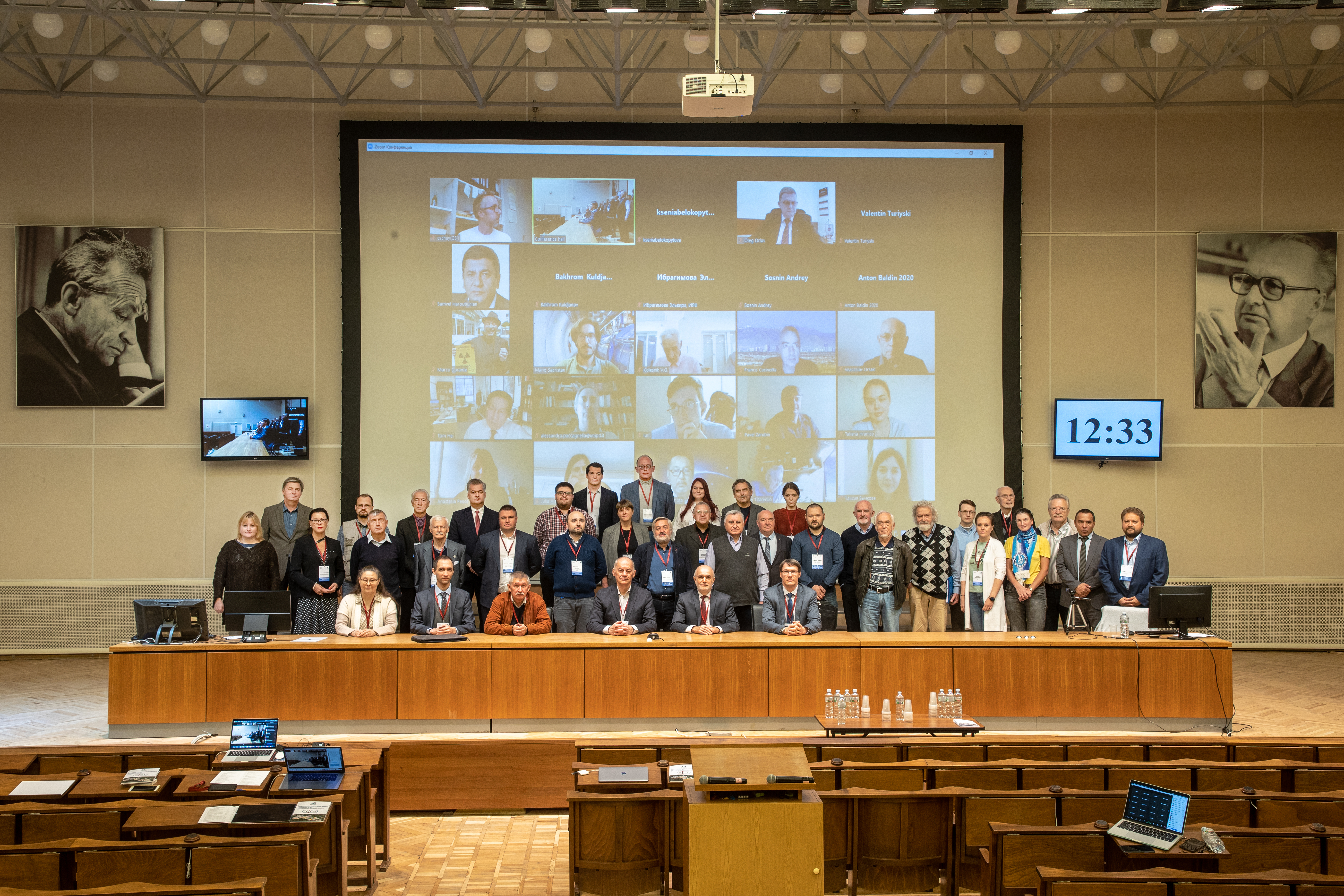International Round Table on Applied Research and Innovations at NICA started in Dubna
News, 16 September 2021
On 15 September 2021, the International Round Table on Applied Research and Innovations at NICA started at the Joint Institute for Nuclear Research as a hybrid event. The sessions of the first day were moderated by Marco Durante (GSI, Germany), Alexander Sorin (JINR), Tom Hei (Columbia University, USA), and Oleg Belov (JINR).
In addition to reports on a broad range of applied research underway at JINR, the agenda of the event included talks of recognised experts from the European Space Agency and CERN, as well as scientific centres of Australia, Germany, Italy, Russia, the USA, the Czech Republic, South Africa, and Japan.
Opening the Round Table, JINR Director Academician Grigory Trubnikov expressed his hope that the meeting would help JINR create an open and attractive policy for users of future beams for applied research at the NICA collider. “The Joint Institute is making every effort to launch the facility on time in late 2022 – early 2023. Therefore, now is the time to discuss the policy of using beams for applied research, to understand the needs of future users. Your participation, attention, and intellectual contribution to this project are extremely important for us,” noted the JINR Director in his speech.
Among the main tasks of the event, Grigory Trubnikov outlined the promotion of new capabilities of the NICA complex for applied research in biology and medicine, the study of radiation hardness of semiconductor devices, radiation materials science, and development of advanced nuclear power technologies. One of the expected results of the meeting is the establishment of an international Programme Advisory Committee for projects and programmes of applied research at the NICA complex. It is assumed that in the future this Committee will be supplemented and will oversee the programme of the future JINR International Innovation Centre. “At present, integrally about 10-15% of the Topical Plan of JINR is devoted to programmes on applied research. I think this is the right balance for our international scientific centre, the strategic task of which is fundamental research. But even 10-15% is a huge resource, and we must use it as efficiently as possible, make this programme bright and really international, innovatively attractive,” noted the JINR Director.
The Roadmap for the establishment of the JINR International Innovation Centre will be submitted at the JINR CP session in November 2021. The key elements of its scientific infrastructure will be extracted beams from the NICA accelerator complex (ARIADNA – Applied Research Infrastructure for Advance Development at NICA fAcility), a unique set of LRB research facilities, the DC-140 cyclotron for materials science at FLNR, the superconducting cyclotron SC-230 for the development of proton therapy, as well as a new radiochemical laboratory planned to be created to study technologies for obtaining radionuclides in nuclear photoreactions. An important aspect is a task of facilitating the development of not only JINR’s own innovation infrastructure but also the infrastructure of the JINR Member States with the subsequent formation of an international network programme for the development of innovations.
This Round Table is the first in a series of thematic meetings on various elements of the scientific infrastructure of the innovation centre. Grigory Trubnikov emphasised the importance of exchanging experience with partners from the world’s leading research centres in order to make the scientific programme of the future innovation centre complementary and enriching the scientific research of colleagues.
Leader of the NICA project, JINR Vice-Director Vladimir Kekelidze spoke about the current status of the megascience project. “Our mission is not only to satisfy our scientific curiosity and gain new knowledge in the fields of fundamental science but to make an innovative contribution to the life of society. We are talking about such areas as power industry, microelectronics, research of biological objects and the impact of radiation on them in far and near space, since almost the entire spectrum of such radiation is produced at our accelerator complex, and much more,” he said.
At the end of the first day, the participants had a hybrid (in-person/virtual) excursion to the NICA complex.
On the second day of the event, scientists discussed the development of nano- and microstructured materials at the new collider, testing the radiation effect on electronic devices, simulating experiments on nuclear planetology, and applied work on the development of new nuclear power technologies. Round table sessions were moderated by Christina Trautmann (GSI, Germany), Pavel Apel (JINR), Hiroyoshi Sakurai (RIKEN, Japan), Mihaela Paraipan (JINR), and Igor Rudnev (NRNU MEPhI, Russia). The second day of the event was completed with a thematic discussion platform on these issues. In addition, the Memorandum was signed at the end of the sessions.
Within the framework of the Round Table, the first meeting of the NICA Applied Research and Innovation Committee took place.
